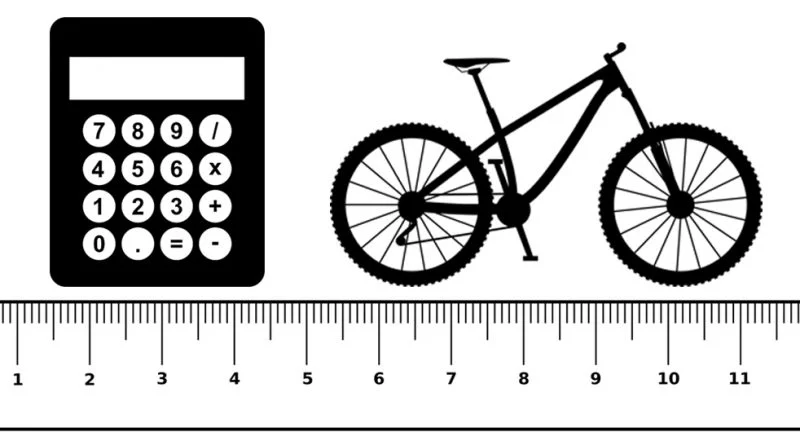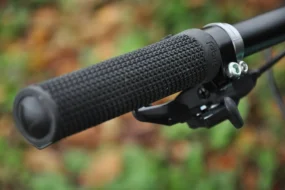
When purchasing a bike, one of the primary factors to take into account is the frame size. This aspect is heavily reliant on the rider’s body structure and the intended bike usage.
When considering the purchase of a bicycle, the initial question to address is, “What frame size suits me?” The utmost importance lies in consistently selecting the appropriate frame size to safeguard your performance. This pertains to your ability to pedal continuously for extended periods without experiencing discomfort in your back, neck, legs, arms, or shoulders.
Opting for an incorrectly sized frame can lead to an uncomfortable biking experience. Ensuring the correct frame size is your assurance of achieving optimal comfort during your rides, simultaneously enhancing your performance.
Table of Contents
How to choose the right bike frame size?
Bicycle frame sizing, the postural study

If this is your first bicycle and you lack any prior reference material, you have the option to undergo a postural study. This study, based on your individual anatomy, will precisely determine the optimal dimensions for your future bike. Typically, it is offered when you choose a custom frame.
This initial step provides you with a foundational understanding. Alternatively, you can utilize mathematical formulas or reference tables to select the appropriate bike frame size.
It’s crucial to recognize that frame sizes can be expressed in either centimeters or inches. They can also be designated using standardized sizes such as XS, S, M, L, XL, or XXL, though these sizes may slightly differ among manufacturers. To ensure maximum comfort, there should always be a specific clearance between your crotch and the frame’s horizontal tube. The recommended clearance is 4cm for a road bike and 8cm for a mountain bike.
Most bicycle manufacturers offer frame size charts to assist you in identifying the right size for your bike.
When searching for a used or vintage bike, you can follow various methods to find the right frame size based on your height. These methods include:
- Utilizing Specific Formulas: You can make use of specific formulas designed for calculating the appropriate bicycle frame size.
- Referring to Frame Size Charts: Another effective approach is to refer to frame size charts that are tailored to the cyclist’s height. These charts offer a straightforward way to match your height with the ideal frame size.
Mathematical formulas to determine adult bike size
You can employ scientific formulas to pinpoint the ideal frame size for your body shape. These straightforward formulas, rooted in inseam length, aid in ascertaining frame height. Essentially, a bicycle’s size corresponds to the elevation of its seat tube.
Calculate the ideal frame size for a racing bike
Calculate your road bike’s ideal frame size by using this formula: inseam length (in cm) multiplied by 0.66 equals the recommended frame size (in cm).
For instance, if your inseam measures 80 cm:
80 cm x 0.66 = 52.8 cm
So, 52.8 cm would be your ideal frame size. This figure represents the seat tube’s height, measured from the bottom bracket axle to the end of the tube where the seatpost exits.
Calculate the ideal frame size for a mountain bike
To determine the recommended frame size for a mountain bike, use the following formula:
Inseam length (in cm) x 0.59 = Recommended frame size (in cm)
For instance, if your inseam measures 80 cm:
80 cm x 0.59 = 47.2 cm
Calculate the ideal frame size for a mountain bike or touring bike

When it comes to determining the frame size for trekking or travel bikes, similar to what we’ve seen with racing and mountain bikes, you can align your own height with the manufacturer’s specified measurements. For instance, if you’re 173 cm tall, the manufacturer recommends a 52 cm frame size, referring specifically to the seat tube. We can verify this using a mathematical model.
Choosing the right size for a travel bike hinges on your intended use. Are you planning on leisurely long-distance rides, equipped with panniers? Or do you lean towards high-speed, multi-hour bikepacking adventures? Your choice of bike type and frame size may vary depending on your preferences and needs.
For a comfortable, upright riding style, a 53 cm frame size is suitable. Conversely, if you aim for a sportier, more “racing” setup, a 52 cm size is a better fit.
Before making your purchase, it’s always wise to request a test ride from the dealer. This allows you to assess how the bike feels and determine which size suits you best.
A good frame length
Proper frame length is vital for your comfort when cycling. To determine this, you’ll apply a formula based on the Inseam (EJ) to Height (T) ratio. This formula provides the ideal height-to-length ratio for your bike.
Here’s how it works:
- If EJ/T equals 0.48, your frame length should be Height plus 1 cm.
- If EJ/T is less than 0.48, your frame length should be less than Height plus 1 cm.
- If EJ/T exceeds 0.48, your frame length should be greater than Height plus 1 cm.
This formula helps ensure your bike is the right fit for you, enhancing your comfort and overall biking experience.
Reference tables
You can consult reference tables to assist you in determining the appropriate bike frame size. While not as accurate as the aforementioned formulas, these tables can provide useful guidance.
| Cyclist’s Height | Inseam | Road Bike Size | Mountain Bike Size |
|---|---|---|---|
| 152-160 cm | 68-73 cm | 48 cm | 38 cm |
| 161-162 cm | 74 cm | 48 cm | 38 cm (14 inches) |
| 163-164 cm | 75 cm | 50 cm | 41 cm (16 inches) |
| 165-166 cm | 76 cm | 52 cm | 41 cm (16 inches) |
| 167-168 cm | 77 cm | 52 cm | 41 cm (16 inches) |
| 169-170 cm | 79 cm | 53 cm | 44 cm (18 inches) |
| 171-174 cm | 81 cm | 53 cm | 44 cm (18 inches) |
| 175-178 cm | 82 cm | 54 cm | 46 cm (18.5 inches) |
| 179-180 cm | 84 cm | 54 cm | 50 cm (20 inches) |
| 181-182 cm | 86 cm | 56 cm | 50 cm (20 inches) |
| 183-186 cm | 88 cm | 56 cm | 52 cm (21 inches) |
| 187-188 cm | 90 cm | 58 cm | 52 cm (21 inches) |
| 189-192 cm | 91 cm | 60 cm | 55 cm (22 inches) |
| 192-200 cm | 94 cm | 62 cm | 55 cm (22 inches) |
For children’s bikes, where frame size consistency is common, the key factors for selection are inseam size and wheel dimensions. In the case of children’s bikes, these two factors are typically the most crucial considerations.
Children’s bike size chart :
| Child Cyclist’s Inseam Measurement | Bicycle Wheel Size |
|---|---|
| Less than 40 cm | Appropriate |
| 40 to 50 cm | 12″ |
| 50 to 58 cm | 14″ |
| 58 to 68 cm | 16″ |
| 68 cm to 72 cm | 20″ |
| Over 72 cm | 24″ |
Please note that the rider’s height, as indicated in this table, serves merely as a reference. Generally, it doesn’t factor prominently into frame measurements. Presently, frame geometries and designs widely differ among manufacturers, devoid of any standardized norms. Given the uniqueness of individuals’ proportions, the crucial metric is the inseam.
To ensure that your bike frame size suits you perfectly, the optimal approach is to test it out. When you’re on the bike, it’s vital to establish a comfortable connection. Never invest in a bike that feels uncomfortable. Therefore, aside from frame size, making precise adjustments to your frame is crucial, such as the handlebar and stem height and angle. Additionally, selecting the appropriate saddle is of utmost importance and varies depending on your personal physique and requirements.
You might like also to read: Restrap Frame Bags: Is It The Best?
Related Q&A

Q1: What factors should you consider when selecting a frame size for your body type?
A1: When choosing a frame size, consider your height, bone structure, and body proportions.
Q2: Why is it important to choose the right frame size for your body type?
A2: Selecting the right frame size enhances comfort and complements your appearance, boosting confidence.
Q3: How can you determine your body type to make an informed frame size decision?
A3: Identify your body type by measuring your height, shoulders, waist, and hips to assess proportions.
Q4: What are the benefits of matching your frame size to your body type?
A4: Matching your frame size ensures better fit, comfort, and a balanced, flattering look.
Q5: Are there any specific guidelines for petite individuals when selecting a frame size?
A5: Petite individuals should opt for smaller frame sizes to avoid overwhelming their stature.
Q6: How does your height influence the frame size that suits you best?
A6: Taller individuals generally benefit from larger frame sizes to maintain proportionality.
Q7: Can you explain the role of proportions in frame size selection for different body types?
A7: Frame size should harmonize with your proportions to create a balanced appearance.
Q8: What are some common mistakes people make when choosing a frame size that doesn’t match their body type?
A8: Common mistakes include opting for overly large or small frames, leading to discomfort and imbalance.
Q9: How does a mismatched frame size affect your overall appearance and comfort?
A9: A mismatched frame size can make you appear disproportionate and cause discomfort.
Q10: Could you provide some transition tips for transitioning from one frame size to another as your body changes?
A10: Gradually adjust your frame size as your body changes, considering comfort and aesthetics.








